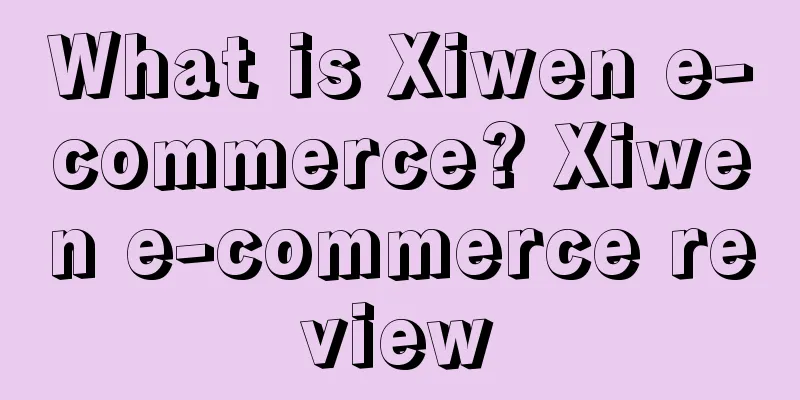In 2021, how can cross-border sellers break through the siege and seize the opportunity?

|
On the last day of 2020, the central parity rate of RMB against the US dollar was 6.5249 yuan, an increase of 76 points. Since the beginning of this year, the RMB exchange rate against the US dollar has first declined and then risen, with the central parity rate accumulating an appreciation of 4513 basis points, an appreciation rate of 6.47%. US Dollar Index Trend In other words, the dollar has fallen by more than 8 percentage points from the end of May to the end of 2020. The continued decline of the dollar has posed a considerable challenge to the foreign exchange settlement operations of cross-border enterprises. Several people from the financial market departments of domestic banks revealed that three months ago, it was rare to see cross-border export companies include exchange rate fluctuations in the contract terms when negotiating export orders. Now, when negotiating next year's export orders, they have included exchange rate fluctuations in the contract terms, requiring overseas buyers to either pay directly in RMB or pay the corresponding US dollar amount at the agreed exchange rate, so as to avoid greater losses in foreign exchange settlement (converting US dollars into RMB) caused by the continued appreciation of the RMB. “I don’t dare to convert foreign currency into RMB. As a result, the exchange rate is getting lower and lower. It is too difficult for people to cross the border.” "The exchange rate has plummeted, and shipping costs have skyrocketed. Is this leaving no way for people crossing the border to survive?" "The goods have been shipped, but those who haven't received the money yet are going to cry in the toilet." According to the current exchange rate, if you convert 100,000 US dollars into RMB now, you will lose nearly 70,000 RMB compared to six months ago. Many ports in Europe and the United States are congested, while many domestic ports are extremely short of containers. Under such circumstances, many large shipping companies have begun to impose additional charges such as congestion surcharges, peak season surcharges, and container shortage fees. Sellers are also under increasing pressure on freight rates. In addition, many industry insiders have said that the high point of freight rates will not stop here, and the strong demand for containers is expected to continue until the first quarter of next year. Many sellers said that this year's exchange rate and freight rates have eaten up all the profits of orders, and most sellers are short of funds. In addition to the shortage of funds, sellers are also troubled by cross-border payment difficulties such as the difficulty in applying for overseas bank accounts, the complexity of fund management for multi-platform stores, and the slow withdrawal process. This has caused some sellers to be trapped in a financial "snowball gate" and their debts are getting bigger and bigger. In this regard, professionals said that cross-border enterprises can eliminate, transfer and hedge the risk of RMB appreciation through financial instruments, reduce risk exposure to a relatively low level, and choose the right time to settle foreign exchange to actively respond to exchange rate fluctuations. Taking CITIC Bank's global cross-border e-commerce payment product "Xinyin Zhihui" as an example, the settlement time is freely determined by the seller, and the settlement is made at the right time according to the specific funding needs to avoid exchange losses and receive the money in real time. "It has to be said that the current cross-border e-commerce market has become a red ocean, and the capital chain is like the lifeline of sellers. Especially in 2021, with the large fluctuations in market conditions, a continuous and stable flow of funds has become increasingly important. Faced with the uneven quality of cross-border payment institutions in the market, sellers need to re-sort out the payment channels for funds, so as to ensure safe and stable operating returns." said a relevant person in charge of CITIC Bank Zhihui. According to reports, Xinyin Zhihui is a cross-border e-commerce payment product jointly developed by China CITIC Bank and overseas banks. It adopts a fully closed capital chain, that is, a closed loop of funds and information. The payment account bound by the seller on the cross-border e-commerce platform is China CITIC Bank's overseas umbrella account. After receiving the funds overseas, the seller can initiate a cash withdrawal, further shortening the payment process and reducing the number of participating institutions, achieving both high security and strong timeliness.
It is understood that this system refers to CITIC Bank opening an account in an overseas bank, and allocating sub-accounts to sellers for payment. After the seller's sub-account receives funds from the cross-border e-commerce platform, the funds are collected in the CITIC Bank account without going through any third-party payment companies at home or abroad, thus ensuring the safety of the funds. |
<<: How to select products for independent websites in 2021? 10 tips to do it perfectly!
>>: Amazon has a new feature! This type of seller is laughing...
Recommend
UPS and other carriers extend peak season surcharges, holiday shipping costs surge
It is learned that on December 3, according to for...
What is import customs clearance? Import customs clearance review
Import refers to the act of transferring goods fro...
Best Buy's Q4 revenue of $14.65 billion exceeded expectations, but it warned of layoffs
It is learned that on February 29, Best Buy, the U...
Lead content exceeds the limit! CPSC recalls 170 wool sweaters!
The U.S. Consumer Product Safety Commission (CPSC)...
What is Cdiscount? Cdiscount Review
Cdiscount is currently the largest e-commerce plat...
Walmart sellers beware! Phishing emails reappear, beware!
With the development of technology, online fraud h...
Shenzhen Port was hit hard! Just now, Hong Kong officially implemented...
Recently, a piece of news has caused mainland shi...
Shopify in talks to acquire tech startup Deliverr as it seeks logistics expansion
<span data-shimo-docs="[[20,"获悉,据外媒报道,Shop...
Fine! Seller faces $12.8 million fine for fake reviews!
Recently, according to the latest data from monito...
What is Mingzhi International Logistics Co., Ltd.? Mingzhi International Logistics Co., Ltd. Review
Mingzhi International is an international logistic...
What is eMAG? eMAG Review
eMAG is the largest online retailer in Romania. It...
Amazon operators with a monthly salary of 20,000 yuan, what do they do every day
Today I will share with you what Amazon operators ...
What is Amazon Category Review Invoice? Amazon Category Review Invoice Review
Amazon category review invoices (copies of invoice...
What is mymakeupbrushset? mymakeupbrushset review
mymakeupbrushset is a global brand that focuses on...
This year's Prime Day registration has started! Maybe it will start in August?
Recently, a piece of news has been circulating on...









